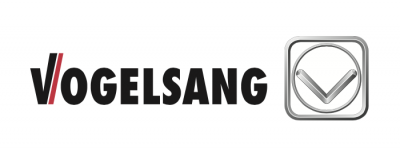La pompa Vogelsang non deteriora e non rovina la vinaccia, che viene semplicemente spostata direttamente sul nastro che alimenta poi le presse, senza provocare rotture dell’acino
Ci troviamo a La Morra, in piena zona del Barolo, in Piemonte, presso la Batasiolo, un’azienda privata che è stata creata negli anni ’70 dalla famiglia Dogliani, con annessa una quantità importante di vigneti di proprietà: 115 ettari distribuiti su diversi comuni, cioè la Morra, Barolo, Monforte d’Alba, Serralunga d’Alba.
Paolo Pronzato, enologo della Batasiolo, si occupa di tutta la parte tecnica di cantina, dalla lavorazione delle uve fino degli imbottigliamenti.
“Tutte queste uve vengono conferite, consegnate e lavorate qui, nel centro di La Morra. La base primaria per la produzione dei nostri vini, tipici piemontesi, è il Nebbiolo del Barolo, e poi abbiamo altre uve classiche di Langa, come Barbera, Dolcetto, anche Moscato. A Serralunga coltiviamo anche Asti, e Chardonnay, quindi bianchi e rossi principalmente tipici di Langa. L’azienda ha una potenzialità di imbottigliamento che mediamente, in base agli anni, possiamo definire intorno ai 2,5-3 milioni di bottiglie”.
 “La fase in cui abbiamo scelto di installare la pompa a lobi Vogelsang come soluzione tecnica è stata il processo di svinamento dei fermentini, in particolare lo spostamento della vinaccia e quindi l’esaurimento finale della parte di vinificazione. Inizialmente abbiamo provato per un anno questa pompa, che è una pompa particolare, e l’abbiamo scelta avendo fatto prove anche con altre tipologie di pompe, perché ha la peculiarità, in parole povere, di trasportare la vinaccia, come si suol dire, “come entra esce”, cioè non viene deteriorata, non viene rovinata, ma viene semplicemente spostata direttamente sul nastro che alimenta poi le nostre presse, senza provocare rotture dell’acino.
“La fase in cui abbiamo scelto di installare la pompa a lobi Vogelsang come soluzione tecnica è stata il processo di svinamento dei fermentini, in particolare lo spostamento della vinaccia e quindi l’esaurimento finale della parte di vinificazione. Inizialmente abbiamo provato per un anno questa pompa, che è una pompa particolare, e l’abbiamo scelta avendo fatto prove anche con altre tipologie di pompe, perché ha la peculiarità, in parole povere, di trasportare la vinaccia, come si suol dire, “come entra esce”, cioè non viene deteriorata, non viene rovinata, ma viene semplicemente spostata direttamente sul nastro che alimenta poi le nostre presse, senza provocare rotture dell’acino.
L’uva più difficile da movimentare per noi è sicuramente il Nebbiolo perché ha una vinaccia particolarmente sottile come buccia e quindi difficilmente pompabile. Grazie a questa pompa a lobi riusciamo a pompare questa vinaccia senza utilizzare liquido, quindi fondamentalmente abbiamo, in termini di qualità, un prodotto che non viene deteriorato e quindi quello che andrà poi in pressa sarà la vinaccia pura, come cernita o nei vinificatori”.
Preserving the quality of the leaves, making processes more efficient
Vogelsang pump does not deteriorate or ruin the final product, but simply move it directly onto the belt which then feeds the presses, without causing breakage of the grapes
We are in La Morra, the heart of the Barolo area, in Piedmont, at Batasiolo, a private company that was created in the 70s by the Dogliani family, with an important number of owned vineyards annexed: 115 hectares distributed over various municipalities: Morra, Barolo, Monforte d’Alba, Serralunga d’Alba.
Paolo Pronzato, Batasiolo oenologist, takes care of all the technical part of the cellar, from the processing of the grapes to the bottling.
“All these grapes are all conferred, delivered and processed here, in the center of La Morra. The primary basis for the production of our typical Piedmontese wines is Nebbiolo of Barolo, and then we have other classic Langa grapes, such as Barbera, Dolcetto, even Moscato. In Serralunga we also cultivate Asti, and Chardonnay, therefore white and red wines typical of the Langas area. The company has a bottling potential that on average as around 2.5-3 million bottles for year, depending on the different seasonal condition of every harvesting.”
“The phase in which we chose to install the Vogelsang lobe pump, as a technical solution, was the process of racking off the fermenters, in particular the moving of the marc and therefore the final depletion of the vinification part. Initially we tried this pump for a year: is a particular pump, and we chose it having also tested other types of pumps, because it has the particularity, in simple terms, to transport the products “ as it enters it leaves”, not deteriorated, not ruining in any way the final product, but it is simply moved directly onto the belt which then feeds our presses, without causing breakage of the grape.
The most difficult kind of grape for us to move is certainly Nebbiolo because it has a particularly thin mark skin and therefore is very difficult to pump. Thanks to this lobe pump we are able to pump this media without using liquid, so basically, we have, in terms of quality, a product that is not deteriorated and therefore what then go to the presses will be pure pomace, as sorting or in the winemakers.”










